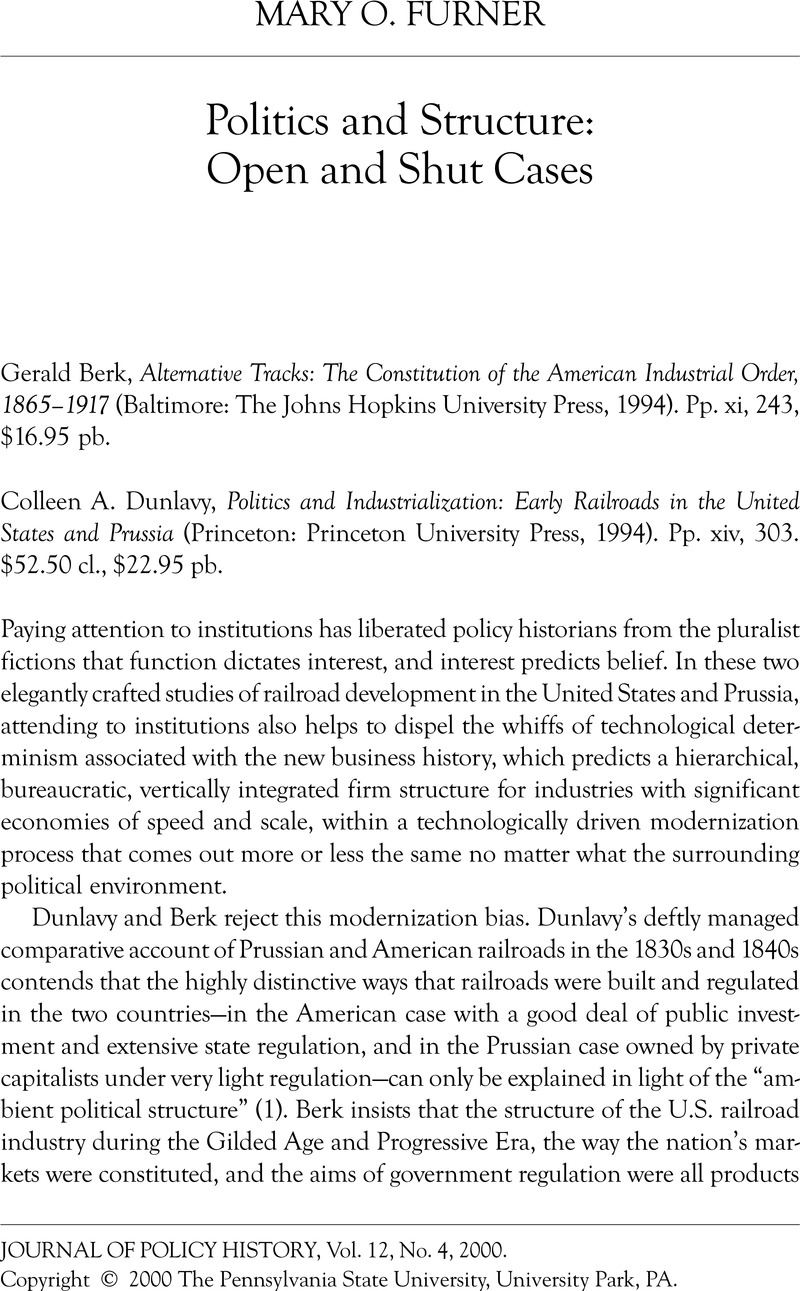No CrossRef data available.
Article contents
Politics and Structure: Open and Shut Cases - Gerald Berk, Alternative Tracks: The Constitution of the American Industrial Order, 1865–1917 (Baltimore: The Johns Hopkins University Press, 1994). Pp. xi, 243, $16.95 pb. - Colleen A. Dunlavy, Politics and Industrialization: Early Railroads in the United States and Prussia (Princeton: Princeton University Press, 1994). Pp. xiv, 303. $52.50 cl., $22.95 pb.
Published online by Cambridge University Press: 27 April 2009
Abstract

- Type
- Book Reviews
- Information
- Copyright
- Copyright © The Pennsylvania State University, University Park, PA. 2000
References
Notes
1. Building a New American State (1982). The analytical structure of Skowronek's more recent The Politics Presidents Make (1993) is similar to Berk's; presidents have more or less latitude for leadership, depending on where their presidencies fall in relation to recurring cycles of reconstruction, articulation, and disjunction of their party's ideological and programmatic commitments.
2. Recall that legal historian McCurdy, Charles found a similar role for judges in creating a national market for goods, in “American Law and the Marketing Structure of the Large Corporation,” Journal of Economic History 38 (1978): 631–649.CrossRefGoogle Scholar
3. Philip Scranton's work has challenged the linear model of a transition from proprietary to corporation capitalism by demonstrating the persistence of a large and profitable economy of specialty firms in manufacturing. See his Proprietary Capitalism: The Textile Manufacture at Philadelphia, 1800–1885 (1983); and his Endless Novelty: Specialty Production and American Industrialization, 1865–1925 (1997).




